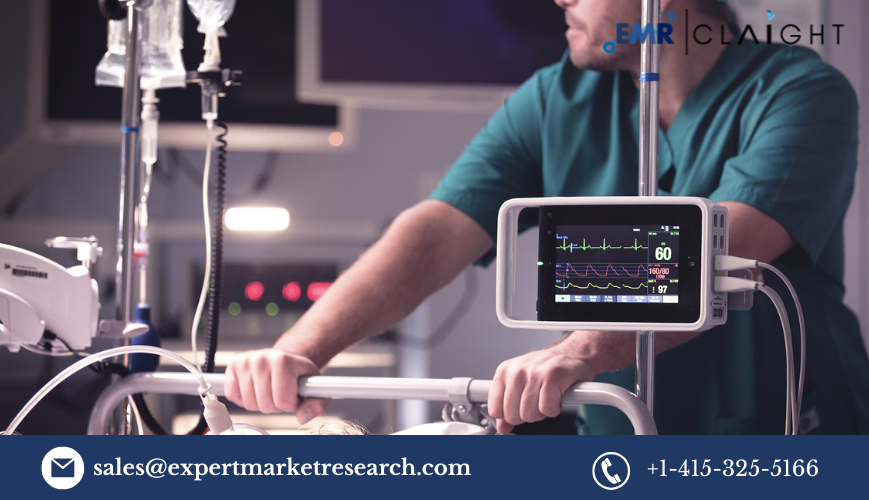The patient monitoring devices market is growing rapidly, valued at USD 43.73 billion in 2023, and projected to reach USD 85.25 billion by 2032, with a steady CAGR of 7.7%. This growth is driven by the rising prevalence of chronic diseases, an aging global population, and remarkable technological advancements in healthcare devices. Patient monitoring devices play a critical role in diagnosing and tracking patient health, enabling real-time insights that improve outcomes and, ultimately, save lives.
In this blog, we’ll dive into the driving factors, market segmentation, innovations, and key players shaping the future of this essential healthcare market.
Market Dynamics: What’s Driving the Growth?
1. Drivers of the Patient Monitoring Devices Market
- Chronic Disease Prevalence: With the global increase in chronic conditions like diabetes, cardiovascular diseases, and respiratory disorders, demand for continuous monitoring devices has surged. This need is particularly significant in managing long-term conditions that require consistent tracking.
- Aging Population: As the elderly population grows, so does the demand for healthcare services that can monitor health remotely or within care facilities. Aging increases the risk of chronic diseases, necessitating reliable monitoring solutions.
- Technological Advancements: Innovations in wireless technology, IoT, and artificial intelligence (AI) have transformed traditional monitoring devices into highly advanced, accessible tools. These technologies enable remote monitoring, allowing healthcare providers to assess patient data without requiring physical visits.
2. Market Restraints and Challenges
- High Cost and Limited Access: The costs of advanced monitoring devices and infrastructure are often prohibitive, especially in emerging markets. Limited access in these regions hampers the full potential of market expansion.
- Data Privacy Concerns: With connected devices, ensuring data security and privacy has become a priority. Complying with regulations and maintaining secure patient information are critical but challenging tasks for manufacturers and healthcare providers.
3. Opportunities and Emerging Trends
- Remote Monitoring and Telehealth Growth: The demand for telehealth has accelerated post-pandemic, with remote patient monitoring gaining mainstream acceptance. Patients can now use wearable devices and home-based monitors for various health metrics, making care accessible and convenient.
- Expansion in Emerging Markets: Many countries, particularly in Asia-Pacific, are investing in healthcare infrastructure. As these regions improve their healthcare systems, the patient monitoring devices market finds new growth avenues.
Segmenting the Market by Device Type
Understanding the different types of patient monitoring devices helps clarify where demand is highest and how each segment caters to specific health needs.
1. Vital Sign Monitors
- Blood Pressure Monitors, Heart Rate Monitors, and Pulse Oximeters are among the most common and essential devices, helping clinicians track vital signs that can indicate early health issues.
2. Neuromonitoring Devices
- EEG, EMG, and ICP Monitors track neurological activity and are crucial in monitoring brain activity in intensive care units or during surgeries. These devices are particularly valuable in managing patients with traumatic brain injuries or neurological disorders.
3. Cardiac Monitoring Devices
- ECG, Holter Monitors, and Event Monitors support patients with cardiac issues, offering continuous tracking and alerting of irregular heart activity. These devices help prevent heart attacks by enabling timely medical intervention.
4. Respiratory Monitoring Devices
- Spirometers and Sleep Apnea Monitors aid in assessing respiratory health, vital for patients with chronic respiratory diseases or sleep disorders like sleep apnea.
5. Fetal and Neonatal Monitoring Devices
- Fetal Heart Rate Monitors and Neonatal Pulse Oximeters focus on monitoring the health of expectant mothers and newborns. These devices provide data critical for detecting early health issues in infants.
6. Multi-parameter Monitors
- Multi-parameter monitors combine several monitoring functions in one device, providing a comprehensive health status overview for patients with complex conditions requiring various data points.
Innovative Trends in Patient Monitoring
Advancements in technology are reshaping the market landscape, enhancing device functionality and user experience.
- AI and Machine Learning Integration: AI algorithms analyze data from monitoring devices to identify health trends, allowing for predictive healthcare. This enables healthcare providers to make proactive interventions, improving patient outcomes.
- Wearable and Wireless Devices: Portable and comfortable, wearable devices like smartwatches and wristbands make continuous health monitoring simple. These devices can track multiple metrics, from heart rate to blood oxygen levels.
- IoT in Healthcare: IoT-enabled devices allow data to be shared seamlessly across platforms, ensuring that healthcare professionals have real-time access to patient health information. This connectivity supports faster decision-making and reduces hospital visits for routine monitoring.
Regional Analysis: Where is the Growth Concentrated?
1. North America
- Leading the market with advanced healthcare infrastructure and high adoption of technology. The U.S. healthcare system has invested heavily in remote monitoring devices, especially with the expansion of telehealth services.
2. Europe
- Driven by a mix of public and private investments, Europe’s patient monitoring market is growing due to rising healthcare awareness and increased government spending on healthcare infrastructure.
3. Asia-Pacific
- The fastest-growing region, with countries like India and China investing in healthcare expansion. With a high population and rising prevalence of chronic diseases, Asia-Pacific holds significant growth potential.
4. Latin America, Middle East, and Africa
- Emerging markets where growth is gradually increasing. Though challenged by limited infrastructure, the rising adoption of affordable monitoring solutions is opening new opportunities.
Key Players in the Global Patient Monitoring Devices Market
In an increasingly competitive landscape, leading companies are innovating and expanding their reach to secure a larger market share.
- Abbott Laboratories: Known for its technological innovations in diagnostics and patient monitoring solutions.
- GE Healthcare and Siemens Healthcare: Leaders in developing multi-parameter and specialized monitoring systems.
- Koninklijke Philips N.V.: With a robust portfolio in telehealth and remote monitoring, Philips is a significant player in this market.
- Masimo and OMRON Corporation: Specialize in wearable devices and home-based monitoring solutions, catering to the growing demand for remote patient care.
Future Projections and Market Outlook (2024–2032)
The global patient monitoring devices market is expected to grow significantly, driven by continual technological advancements and increased healthcare access. By 2032, the market is estimated to reach USD 85.25 billion. We can anticipate even greater integration of AI, further innovations in wearable technology, and enhanced remote monitoring capabilities. Additionally, regulatory changes will impact how companies operate, with stricter data protection and medical device compliance requirements influencing the development and deployment of new devices.




